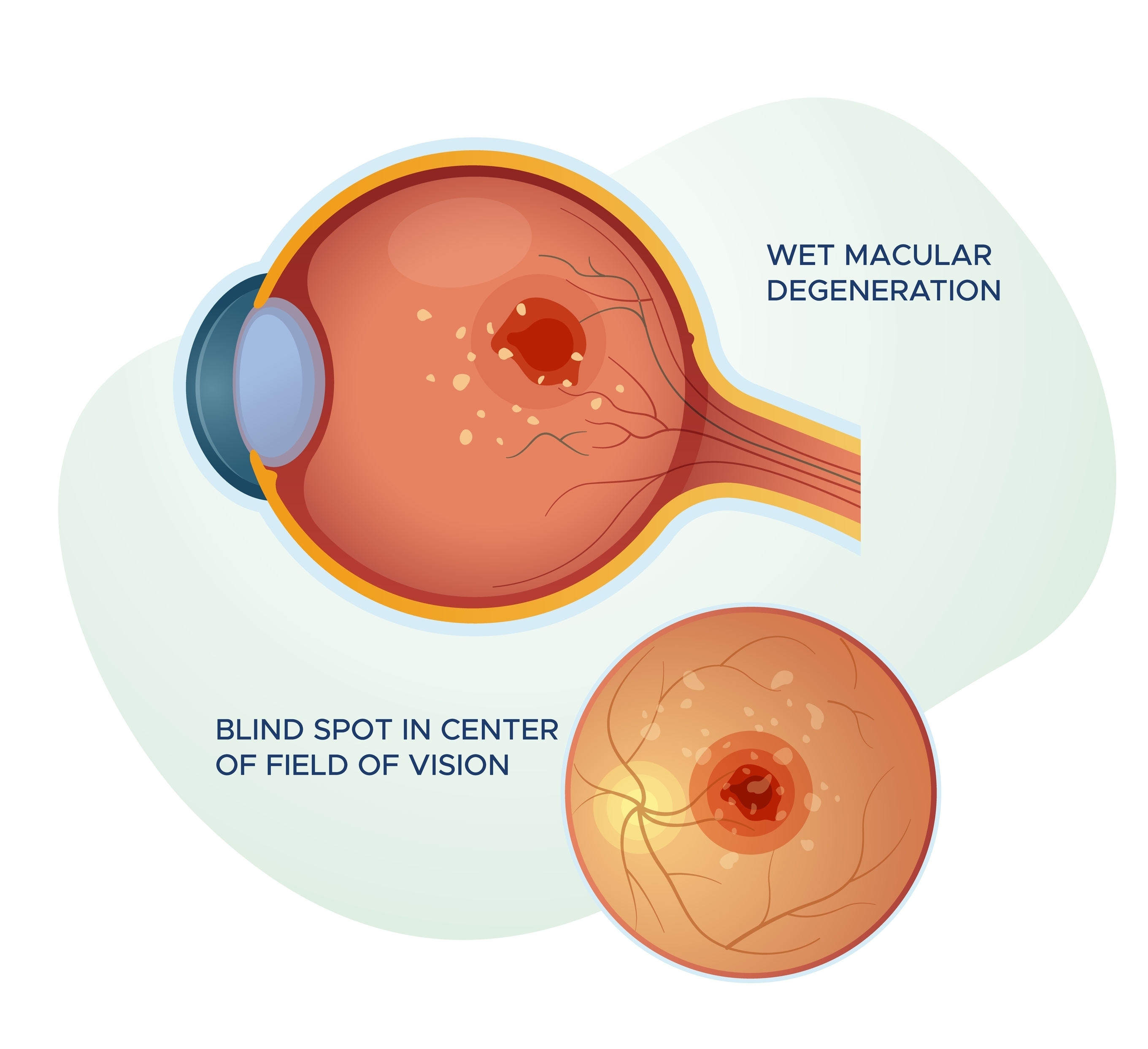
Age-related macular degeneration (AMD) is a leading cause of vision loss among adults over 50. This eye disease affects the macula, the central part of the retina responsible for sharp, detailed vision. While AMD doesn’t usually cause complete blindness, it can significantly impact daily activities such as reading, driving, and recognizing faces. There are two main types of AMD: dry AMD and wet AMD. Understanding the differences between them can make a big difference in protecting your vision.
Dry AMD: The Most Common Form
Dry AMD is the more common type, accounting for about 80–90% of cases. It develops gradually as the macula thins with age and small deposits called drusen form under the retina.
Currently, there is no cure for dry AMD, but treatment focuses on slowing its progression:
Lifestyle changes such as quitting smoking, eating a diet rich in leafy greens and omega-3s, and protecting your eyes from UV light.
Nutritional supplements (AREDS2 formula): These vitamins and minerals have been shown to help reduce the risk of progression in moderate cases.
Routine eye exams: Since dry AMD develops slowly, regular monitoring allows your optometrist to track changes and intervene early if it worsens.
Wet AMD: The More Aggressive Form
Wet AMD is less common but more severe. It occurs when abnormal blood vessels grow beneath the retina and leak fluid or blood, causing rapid and often significant vision loss.
Unlike dry AMD, wet AMD requires prompt medical treatment to preserve vision:
Anti-VEGF injections: Medications such as Lucentis, Eylea, or Avastin are injected directly into the eye to stop abnormal blood vessel growth and reduce fluid leakage.
Laser therapy: In certain cases, laser treatment may be used to seal leaking blood vessels.
Photodynamic therapy (PDT): A light-activated drug is used to target and close off abnormal blood vessels.
These treatments don’t cure wet AMD but can significantly slow progression and, in many cases, help improve vision.
The Importance of Early Detection
One of the most critical factors in managing AMD is early detection. Routine comprehensive eye exams can identify AMD before symptoms become severe. Early diagnosis allows for quicker treatment - especially for wet AMD, where timely care is crucial to preserving sight.
Stay Ahead of AMD with Stonebrook Eyecare and Eyewear
While both dry and wet AMD affect the same part of the eye, their treatments differ greatly. Dry AMD focuses on prevention and slowing progression, while wet AMD requires immediate medical treatment to prevent vision loss. The best way to protect your eyesight is through regular eye exams and early detection.
Schedule your annual eye exam at Stonebrook Eyecare and Eyewear and take the first step toward early detection of AMD. Visit our office in Frisco, Texas, or call (214) 432-4370 to book an appointment today.





